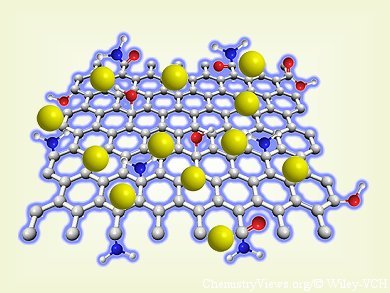A strategy for copper sensing that is simple in design, economical, and offers a “mix-and-detect” protocol without dye-modified oligonucleotides or complex chemical modification has been achieved by Xiaogang Qu and co-workers, Changchun Institute of Applied Chemistry, Chinese Academy of Sciences.
The analytical applications of graphene quantum dots (GQDs) have only recently become a focus of attention. To act as a fluorescent probe for a specific analyte, a GQD must not only recognise the analyte, but it must also have a high quantum yield (QY), and the GQDs must be able to recognize analytes. Although copper is known to be essential for the proper function of many enzymes, it is also known to elicit toxicity to cells through the generation of hydroxyl radicals that cause apoptosis. Hence, a real-time detection and quantification of Cu2+ ions in biological systems is important.
Qu and his group have come up with a a new kind of highly fluorescent probe for Cu2+ sensing based on hydrothermal treatment of GQDs in ammonia. The functionalized GQDs have a much higher quantum yield (16.4 %) relative to normal GQDs (2.5 %). Also, as Cu2+ ions have higher binding affinity and faster chelating kinetics with the surface of these modified GQDs than other transition metal ions, these amino-functionalized GQDs have a good selectivity for Cu2+. Amination also converts the surface charge of the GQDs from negative into positive, making it possible for GQDs be taken up by cells and, hence, leading to the possibility of sensing Cu2+ in biological environments.
- Highly Photoluminescent Amino-Functionalized Graphene Quantum Dots Used for Sensing Copper Ions
H. Sun, N. Gao, L. Wu, J. Ren, W. Wei, X. Qu
Chem. Eur. J. 2013.
DOI: 10.1002/chem.201302268



